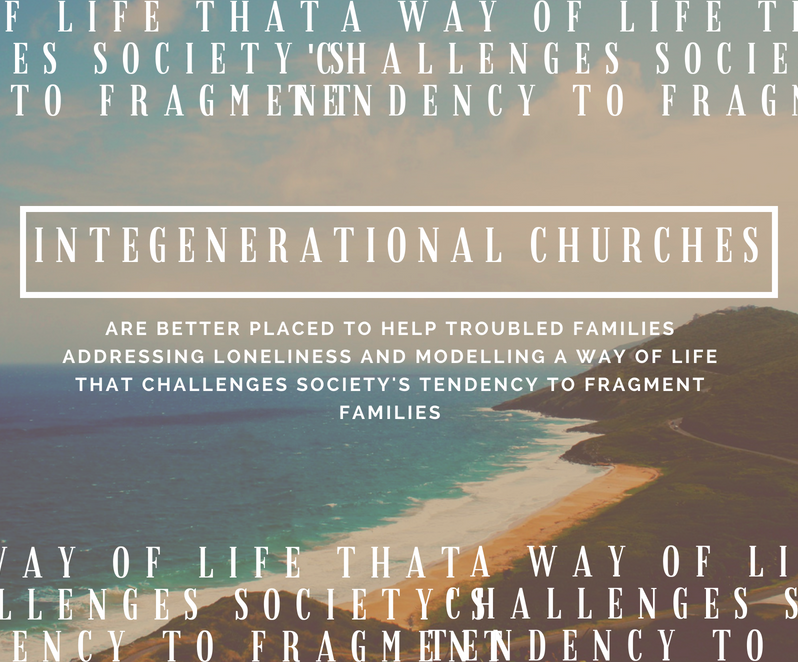This is Part 2 of a three part feature on intergenerational faith formation. Read Part 1 here.
Perhaps one of the major ways we can see church culture change is in the way that different age groups can interact in meaningful ways.
Many youth programs in churches actually segregate age groups. But young people need to be completely enfolded and know that they are part of the Body of Christ. Churches can be transformed through vital interactions across generations through the passion of young people and the wisdom and faith sharing of our elders.
Church congregations can creatively bring generations together and one important way that has been very successful is through the Messy Church movement.
Judyth Roberts of Messy Church Australia stresses the importance of hospitality for all ages as part of the intentional faith sharing that undergirds Messy Church.
“Messy Church is a phenomenon that has taken most by surprise,” says Judyth.
“Churches experimenting with Messy Church are surprised at the simplicity of the premise and how many families come and keep returning. Families who come are surprised at how much they enjoy coming to church, exploring faith stories, being creative, having fun, worshipping and eating together. They are experiencing real Christian hospitality and fellowship, but importantly the people of God are strengthening their faith through action.”
Messy Church Australia held their national conference in February this year in Melbourne. The keynote speaker was Lucy Moore, who began the Messy
Church movement. Moore’s Messy Church began with a simple question: “How can our small church reach the many families in our community?”
And so began a journey of discovery and the birth of Messy Church, shaping worship, learning and fellowship around the needs of families with children.
Messy Church was created for those outside the church, and became church for them, not a stepping stone to Sunday morning church.
There are now thousands of Messy Churches all around the world in most denominations. Across Australia there are more than 220 Messy Churches.
A typical Australian Messy Church meets monthly and includes a flexible, relaxed arrival time; a creative learning time; a short but explicit time of worship with story, music, and prayers, finishing with a sit-down meal for all.
As Kaye Lewis, Family Ministry Pastor at Freshwater Uniting Church on the Northern Beaches of Sydney explains: “Messy Church is designed around five core values; Christ-centeredness, creativity and joyful celebration in a spirit of generous, inclusive hospitality for all ages.”
“Throughout the whole two hours we try and honour all of these core values and even when we choose the songs we don’t do children’s songs, they are for all ages. Even the craft isn’t dumbed down, it’s not all glitter and glue; there is something to take home to remind them of what they have learned that they can talk about at home.”
Messy Church is important in that the model is very different to the segregated group programs of the Sunday School-type models of faith teaching.
“Forming relationships across ages is so important,” explains Kaye. “We’ve had four year olds and 94 year olds at Messy Church and its reciprocal. We’re not just giving to the families, the older people get value and enrichment from the relationships.”

“Freshwater Messy Church happens eight times a year, but we are thinking about doing it monthly. Churches need to have a passion for Messy Church and realise that it isn’t a stepping stone to traditional church – that this is church for the families that gather. It is a church in its own right. Churches considering this model need to prayerfully consider it and remember that it is for all the family not just for grandparents and children.”
Modelling Christ to the community
There is a growing body of research, initially from the USA, but also more recently from the UK and Australia that suggests that churches experience real benefits where individuals of different ages are brought together intentionally for teaching, worship and service. It strengthens the sense of unity in a church, enriches the spiritual learning and is a great opportunity for faith formation through mentoring. There is also evidence, in particularly from recent research carried out in the UK into Family Ministry, that intergenerational churches are better placed to help troubled families, addressing loneliness and modelling a way of life that challenges society’s tendency to fragment families.
For many, especially where parents are separated from their children through family breakdown or work pressures, the gathered worship of a church may be the only time when they can come together. Recognising that this time is so precious should help us see that keeping parents in the service and sending their children away from them is not the best approach.
The Engage Together resources address the fact that gathering together is the perfect opportunity for all ages to come together.
“The idea behind the resource was how we could try and get people to begin to engage intergenerationally in worship,” explains Emma Parr.
“Worship is one of those contexts where 99% of the time churches have a worship service and so giving them some tools for that first 20 minutes of worship and give some ideas for all ages for a call to worship, in scripture readings, in prayers, in songs. And the resources are not necessarily for making sure children are engaged, because we are aware that some churches don’t have children, how can you make sure you are engaging across generations. Even if those generations are 50-80 year olds.
“Worship resources are the first step in helping people and congregations see the value in interacting in an intergenerational way with worship which is already present across the scope of churches. So now we have looked at the first 20 minutes of a church service we are moving into developing resources that look more broadly at what is intergenerational Church and how communities can begin to adapt what they have using these resources.”
This feature continues in Part 3: Generation Future





